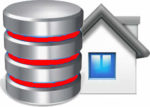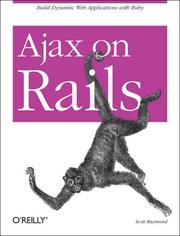Build Dynamic Web Applications with Ruby
In recent years, Ajax and Rails have been two of the hottest-if not
the hottest-new technologies in web development. According to Scott Raymond,
author of Ajax on Rails (O’Reilly), the two technologies have a bit of a
symbiotic relationship: “Rails has popularized certain Ajax techniques, and Ajax
developers have been drawn to Rails’ approach,” he explains. “Although most
other Rails books have touched on Rails’ Ajax abilities, they left a lot of
fertile ground uncovered. I wanted to thoroughly explore the intersection of the
two technologies.”
As Raymond point out, there are solid reasons to believe that both Ajax and
Rails will be significant features of the web development landscape for some
time. “Big players are leading by example: Yahoo, Google, Apple, Microsoft, and
IBM have all started using and touting Ajax techniques, and Rails has become so
associated with web startups that it’s almost cliché.” His new book, which is
also available as a PDF, is the definitive guide to where these two technologies
converge.
“Rails and its supporting technologies continue to evolve and grow at a tiring
rate, and the documentation efforts tend to lag behind. This book covers the
leading edge-with the latest enhancements to RJS (Ruby-generated JavaScript),
new Rails best practices like RESTful routes, and a slew of as-yet-undocumented
changes in Prototype 1.5, Rails’ standard JavaScript library,” notes Raymond.
The recently released Rails 1.2 and Prototype 1.5 are rich in new features, and
both are very well represented in the book.
. The book demonstrates how to use Ajax and Rails to build high-performance,
scalable applications without having to write reams of difficult-to-maintain
JavaScript code.
. Provides a thorough, low-level understanding of what’s under the hood, with a
high-level understanding
. Includes a complete reference to Prototype 1.5 and script.aculo.us 1.6.1,
which can be used even outside of the Rails platform.
. Three fully worked out applications–a quiz program, a photo gallery, and a
workgroup collaboration tool–show how everything fits together in practice.
“My goal is that serious readers will finish the book with the confidence to
call themselves Ajax on Rails experts,” says Raymond. “That means you will not
only understand how to use all of Rails’ shortcuts, but you’ll understand how
they work as well.”
Ajax on Rails is written for readers who are familiar with the technologies used
in dynamic web sites: (X)HTML, CSS, some basic JavaScript, and some server-side
language like PHP. Although this book isn’t an exhaustive guide to Rails (or
Ruby), it should be possible for new users to work through all of the examples.
“On the flip side,” adds Raymond, “There is a lot in this book meant for pros as
well that goes well beyond what any other resource offers. The book covers
high-level topics like security, performance, testing, and debugging.”
And there is one secret about the book, says Raymond: “Despite the title, this
book is useful for non-Rails developers as well. Its extensive references to
Prototype and script.aculo.us are the only such resources in print. Those
libraries have users far beyond the Rails community.”
Scott Raymond is a Ruby on Rails developer living in Kansas City. His work has
been highlighted on the Rails web site and the “Wall Street Journal Online.”
Besides participating in the framework’s development, he has led international
training sessions and was a presenter at RailsConf 2006.

